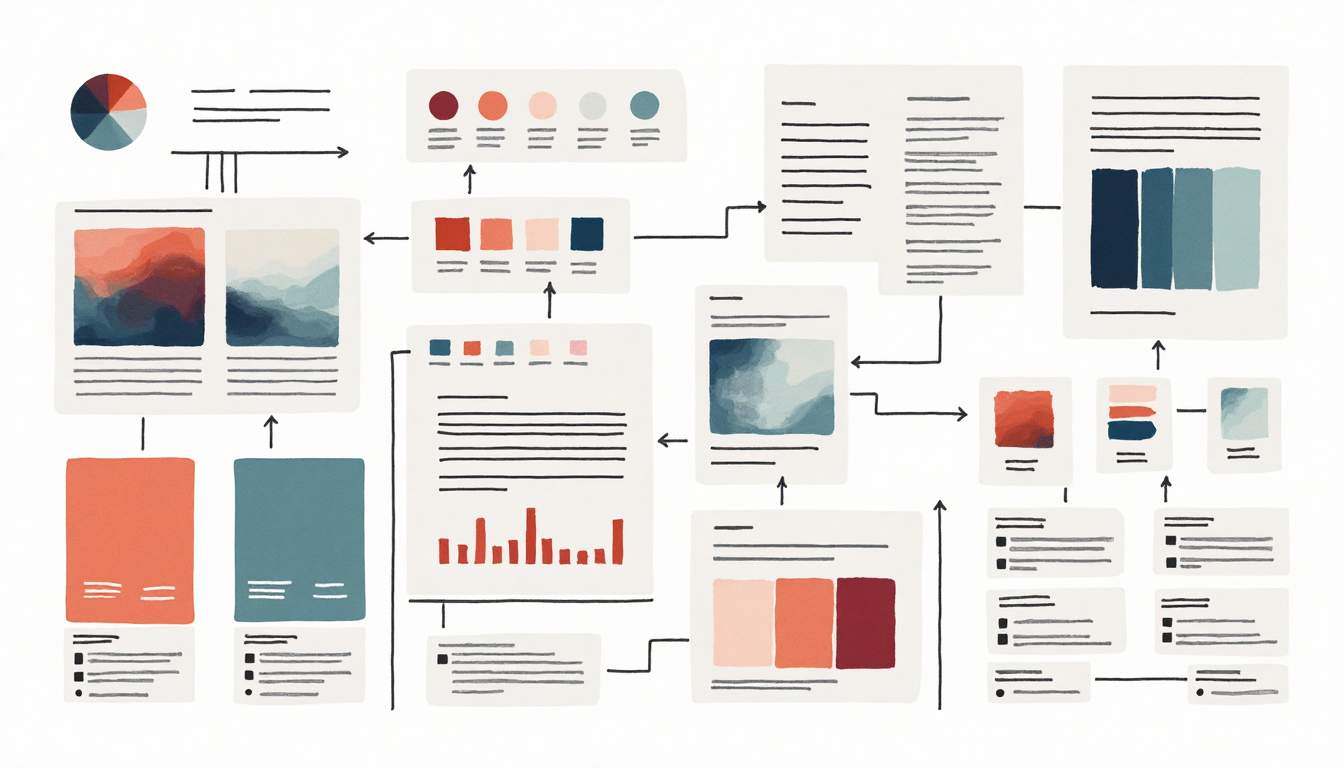Launching an efficient and effective MVP requires balancing speed with quality to deliver a coherent, engaging user experience. A design system is a powerful tool that supports this balance, acting as a framework of reusable UI components, standardized guidelines, and a shared language for designers, developers, and stakeholders.
This article explores how design systems enhance MVP UX design, support rapid prototyping tools through component libraries, and help startups launch faster without sacrificing quality.
Consistent User Experience at Scale with Design Systems
Providing a predictable, consistent UX in an MVP is vital for building trust with early users. A design system ensures every UI element—from buttons and typography to shopping carts and navigation—follows a unified standard, preventing disjointed, confusing interfaces.
This consistency reduces design debt, accelerates decision-making, and increases user satisfaction. A scalable design system acts as a single source of truth, enabling your MVP to grow smoothly at scale while maintaining visual and functional integrity.
Design System Best Practices for Scalable MVPs
- Build a single, evolving source of truth for your design standards.
- Document design patterns comprehensively to ensure uniformity across all screens.
- Foster collaboration by sharing component libraries between designers and developers.
- Incorporate design system accessibility features from day one to reach diverse user groups.
Following these practices ensures your MVP remains cohesive, inclusive, and prepared for rapid feature expansion.
Component Libraries and Rapid Prototyping Tools
Component libraries form the core of your design system, comprising pre-built, reusable UI elements like buttons, forms, modals, and navigation components. These allow your team to rapidly assemble MVP prototypes, enabling faster idea testing and iteration.
Modern rapid prototyping tools like Figma, Sketch, or Adobe XD seamlessly integrate with component libraries, creating synchronized, up-to-date prototypes that are close to your final product. This accelerates feedback cycles and improves stakeholder buy-in.
Using these tools and libraries together minimizes the need to rebuild UI elements from scratch, facilitating faster development and more reliable user testing.
Benefits of a Design System and Prototyping Tools in MVP Development
- Significantly reduce development time through reusable components and rapid prototyping.
- Create a consistent UI that enhances perceived quality and trust.
- Foster better collaboration between designers and engineers.
- Enable scalable and maintainable user interfaces aligned with design system standards.
- Incorporate design system accessibility features early for inclusive experiences.
- Harness rapid prototyping tools to visualize ideas quickly, test user flows, and gather early feedback.
Accelerate Your MVP Launch with Wednesday Solutions’ Launch Program
While the design system and rapid prototyping tools streamline development, execution speed remains essential. Wednesday Solution's Launch program provides an AI-powered sprint framework that helps you validate ideas, build prototypes, and iterate quickly.
Starting with a no-risk Sprint Zero dedicated to validation and strategy, subsequent fixed-price sprints facilitate 3x more experiments and reduce total development time by around 40%. This disciplined yet flexible process empowers startups to efficiently incorporate design systems and rapid prototyping tools into their MVP journey without delays.
Integrating a well-structured design system, leveraging reusable UI components, and using rapid prototyping tools together create a powerful foundation for quick, scalable, and user-friendly MVPs. Coupled with expert execution like Wednesday Solutions’ Launch program, these strategies ensure your MVP hits the market fast—delivering value while maintaining quality.






